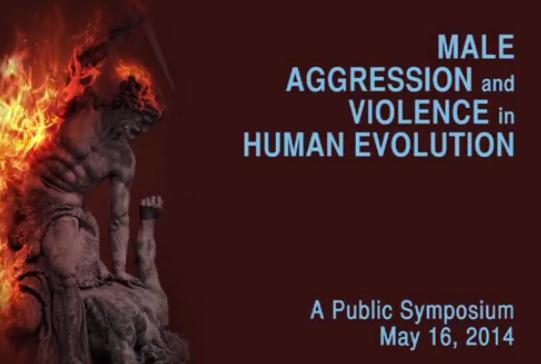Male Aggression and Violence in Human Evolution
In the last few decades, new sources of evidence have continued to indicate that male violence has played an important role in shaping behavior in the human lineage. The frequency and nature of such violence varies widely among populations and over time raises questions about the factors responsible for the variation. In the past, much controversy and even some acrimonious debate has occurred over the question of whether humans lived in a state of ancestral peace. The aim of this symposium is to set aside such theories and debates and take a fresh look at the causes and consequences of variation in aggression, both between and within species. The focus will be on speakers who can critically examine and represent the available evidence from multiple sources, including comparative ethology, ethnology, archaeology, political science, and evolutionary neuroscience. While the symposium may not come to any definitive conclusions, it should allow for the best interpretation of the current evidence, and help suggest research agendas for the future. (from carta.anthropogeny.org)
 |
1. Warfare and Feuding in Pleistocene Societies
Christopher Boehm discusses how today's hunter-gatherers are used to portray likely patterns of male aggression among culturally-modern foragers in the Late Pleistocene epoch.
2. Intergroup Violence: Chimpanzees and Lions
In both lions and chimpanzees, males cooperate in inter-group conflict with group-mates who are often relatives and with whom they maintain close, life-long social bonds.
3. Neuroendocrine Mechanisms Underlying Male Aggression
Donald Pfaff addresses two questions in this talk: First, how is it possible to increase testosterone-fueled aggressive behaviors? Second, what does testosterone do, exactly, in the nerve cell?
4. Bioarchaeological Perspectives on Male Violence in Prehistory
Patricia Lambert examines the bioarchaeological evidence for violence and warfare in ancient California.
5. Male Violence among Ache and Hiwi Hunter-Gatherers
In order to understand how warfare and violence have shaped the natural history of our species, and perhaps favored adaptations that respond to this important life threat, we need to document what types of violence were common in our ancestors and what were the levels of violent death in the past.
6. Resource Unpredictability, Socialization and War
In this talk, Carol Ember describes the results from decades-long research that tested a variety of theories about warfare and other forms of violence in a sample of 186 societies.
7. Violence: What's Culture Got to Do with It?
All humans have the capacity for aggression and reconciliation. However, it is cultural institutions that harness aggression by shaping cognition, corresponding emotions and defining appropriate responses.
8. The Parallel Evolution of Humanity and Savagery
Human male violence is paradoxical. On the one hand, within social groups there is a strong tendency for avoidance of direct conflicts such that confrontations between angry individuals or groups normally end without serious harm.
9. Do Hunter-Gatherers Tell Us about Human Nature?
When many people want to discover the core of human nature, they turn to those people who allegedly are or represent humanity's original condition, hunter-gatherers.
| Related Links |
| The Nature of Human Violence In this lecture, Professor Gwen Adshead will explore current conceptualisations of violence, using criminological, penal and psychological perspectives. |
| Walking with Cavemen This is a four-part BBC documentary series narrated by Robert Winston, about the story of human evolution from Australopithecus afarensis to Homo sapiens. |
| Behaviorally Modern Humans: The Origin of Us One of the enduring questions of human origins is when, where and how we Behaviorally Modern Humans emerged and why and how we eventually replaced all the other human-like species. |
| History of the World to 1500 CE This course presents and at the same time critiques a narrative world history from prehistoric times to 1500. |